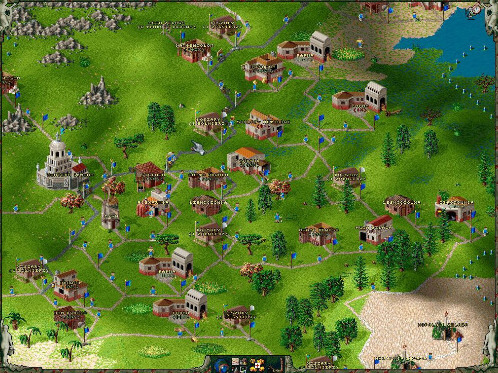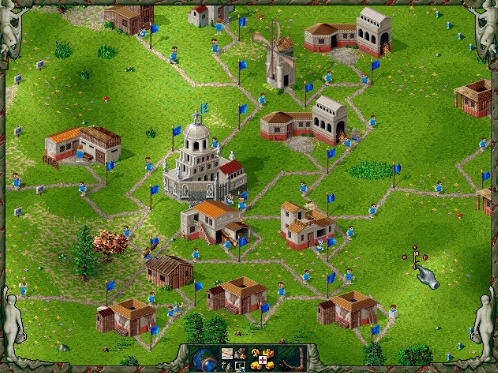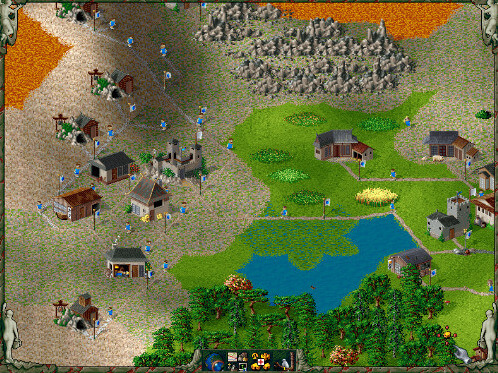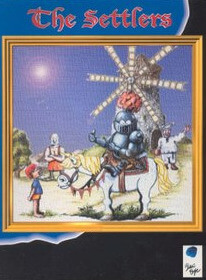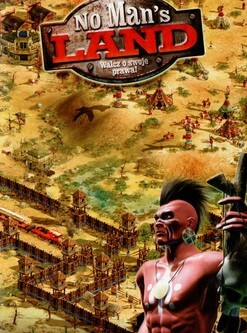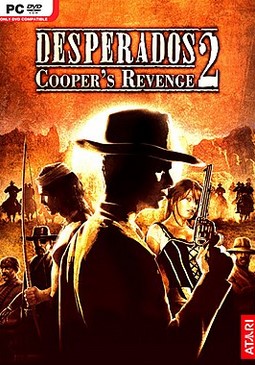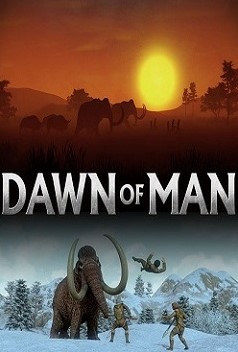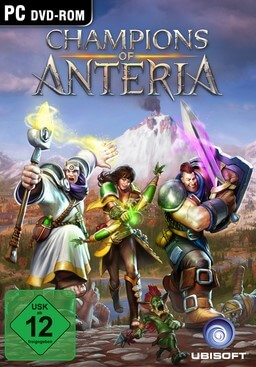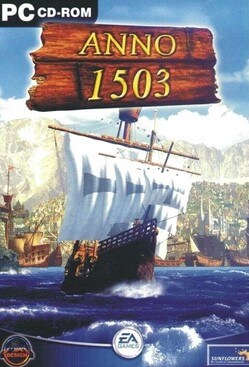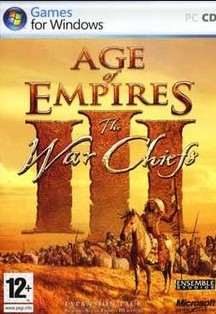In making The Settlers II, Blue Byte wanted to improve upon the first Settlers title to as much of an extent and in as many ways as they could. To this end, they sought fan feedback from the first game, and hired Thomas Häuser, who had worked on quality assurance for The Settlers, as the lead designer. Although the core supply and demand-based gameplay is broadly the same as in the first game, many other aspects of the gameplay and game mechanics have been altered. For example, the sound effects and graphics have been enhanced, with more on-screen movements and more animations for the settlers themselves, and with four aesthetically distinct races; the economic system is more complex; the battle system is more strategic, with the player able to use scouts and stationary offensive weaponry; and a story-driven single-player campaign has been included.
The original game received positive reviews, with critics especially praising the supply and demand gameplay, the complex economic system and the graphics. The most common criticisms were the lack of direct control during combat, and the absence of an online multiplayer mode. The game was a commercial success, selling over 600,000 units worldwide, considerably more than the original Settlers. The DS remake received negative reviews, with many critics arguing it tarnished the legacy of the original, citing unresponsive controls, a poorly implemented HUD, and, especially, game breaking bugs.
Gameplay
The Settlers II is a city-building game with real-time strategy elements, in which the primary goal on each map is to build a settlement with a functioning economy, producing sufficient military units so as to conquer rival territories, ultimately gaining control of either the entire map, or a certain predetermined section of it. To achieve this end, the player must engage in economic micromanagement, construct buildings, and generate resources. The game is controlled via a point and click interface, and features a HUD navigated primarily through "windows" modeled on Windows 95.
Game modes
The game can be played in one of two modes; "Campaign" or "Free Game". In the single-player Campaign mode, the player must complete a series of missions, the goal of each of which is to defeat the computer controlled opponent or opponents by gaining possession of the territory in which the mission objective is located. In the original release of the game, there were ten missions, with the player limited to controlling the Romans. The Mission CD expansion added a new campaign of nine missions, with the player once again confined to controlling the Romans.
In Free Game mode, the player chooses a map on which to play, and then refines the game in various ways, such as selecting the number of races (from two to four), choosing which race to control (Romans, Nubians, Vikings or Japanese), selecting the victory conditions (how much of the map must be controlled), refining the amount of raw materials available to each player at the start of the game, and determining if each race begins in a predetermined spot, or is instead placed randomly on the map. The player can also select the type of game to be played, choosing from "Every man for himself", "Human vs. Computer" and "People vs. People". This allows for a variety of different game types, such as two human controlled races against one computer controlled race (and vice versa), two human controlled races against two computer controlled races, two human and two computer controlled races all fighting one another, and two human controlled races competing against one another. Games involving two human players are played in split screen, with the second player using a mouse on the same PC.
Settlers and transportation
Whether playing in Campaign or Free Game mode, each game begins the same way; the player has one building, a warehouse/headquarters, in which are a set amount of raw materials and tools. The basic gameplay revolves around serfs (the titular "settlers") who transport materials, tools and produce, and who populate and perform the requisite task of each building. As the player constructs buildings and thus requires settlers to occupy them, the settlers automatically emerge from the warehouse as needed. As the settlement continues to grow in size, the warehouse's quota of settlers will eventually be reached, and the player will need to build an additional warehouse to generate more settlers. At no point does the player directly control any individual settler - instead, general orders are issued (such as ordering the construction of a building), with the AI handling the delegation of orders to specific settlers.
An important game mechanic is the construction of a road network so as to allow for an efficient transportation system, as any settlers transporting goods must use roads. To build a road, the player must place a flag, select the "build road" option, and then place another flag. The computer will then automatically find the best route between the two and build the road, although the player is also free to build the road manually. To maximize distribution, the player must set as many flags as possible on each road. Flags can only be set a certain distance apart, and serve as transport hubs; a settler will carry an item to a flag and set it down, at which point the next settler along will pick up the item and continue, freeing the first settler to return and pick up another item at the previous flag. The more flags the player has, the more settlers will operate on a given road, cutting down the distance each settler must travel, and reducing the time to transport one item and return for the next, thus avoiding item congestion at each flag. When more than one item is placed at a flag, the game has an adjustable goods priority system, which determines the order in which items are transported. Players can also build shipyards, which allow for the manufacture of boats (can transport goods over small stretches of water), and ships (can transport goods across oceans).







